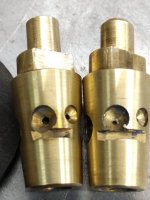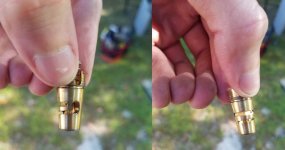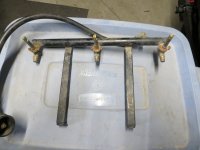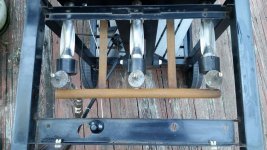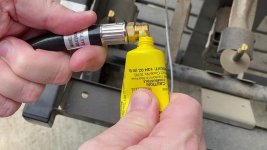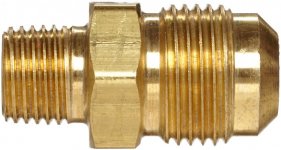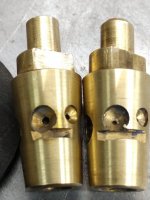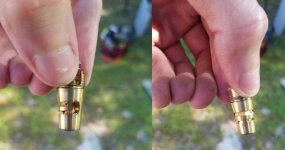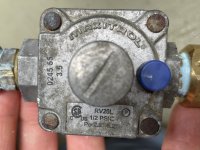Over the past few years, we have seen more and more people refurbishing vintage Weber gas grills, and along with this comes an increasing number of questions about gas conversion between liquid propane (LP) and natural gas (NG). In the old days, Weber would sell you the parts needed to convert an LP grill to NG or vice versa. Today, Weber is very clear that they don't want customers doing gas conversions, nor do they want you moving grills between countries and attempting to adapt from one country's gas standard to another. When done wrong, these modifications can damage the grill or cause property damage, personal injury, or even death.
As a forum, we see many people who think conversion is as simple as buying and installing a third-pary DIY conversion kit. Often times these conversion kits fail. They include questionable parts that when installed result in roaring burners that can't be controlled.
Or maybe you read that you can drill-out small LP orifices to make them large NG orifices, or that you can buy orifice "spuds" and drill them to the desired size to convert a NG grill to an LP grill. In order for this to work properly, you need the right kind of gas valves in your existing grill. Do you know what kind of valves your gas grill has? Are they fixed spool gas valves or continuous spool gas valves? And how can you tell the difference between the two? If you don't know what you're doing and don't have the right information, at best you end up with a grill that doesn't work properly, and at worst you end up with a grill that is dangerous to operate.
Our advice is that you shouldn't mess with replacing individual orifices, valves, etc. After lots of wasted time and money, many people end up with grills that do not work properly, like the one shown in the photo below.
Our stock answer to the question of how to convert a Weber gas grill is this: Replace the entire manifold assembly with one designed for the desired fuel type. Yes, replacing the entire manifold is more expensive, but it's a project that is within the capabilities of many owners and likely ends with a successful and satisfying outcome.
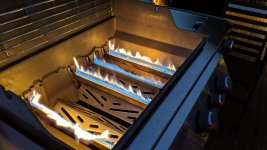
Photo Credit: TVWBB member JoeR
Continued...
As a forum, we see many people who think conversion is as simple as buying and installing a third-pary DIY conversion kit. Often times these conversion kits fail. They include questionable parts that when installed result in roaring burners that can't be controlled.
Or maybe you read that you can drill-out small LP orifices to make them large NG orifices, or that you can buy orifice "spuds" and drill them to the desired size to convert a NG grill to an LP grill. In order for this to work properly, you need the right kind of gas valves in your existing grill. Do you know what kind of valves your gas grill has? Are they fixed spool gas valves or continuous spool gas valves? And how can you tell the difference between the two? If you don't know what you're doing and don't have the right information, at best you end up with a grill that doesn't work properly, and at worst you end up with a grill that is dangerous to operate.
Our advice is that you shouldn't mess with replacing individual orifices, valves, etc. After lots of wasted time and money, many people end up with grills that do not work properly, like the one shown in the photo below.
Our stock answer to the question of how to convert a Weber gas grill is this: Replace the entire manifold assembly with one designed for the desired fuel type. Yes, replacing the entire manifold is more expensive, but it's a project that is within the capabilities of many owners and likely ends with a successful and satisfying outcome.

Photo Credit: TVWBB member JoeR
Continued...
Attachments
Last edited:


